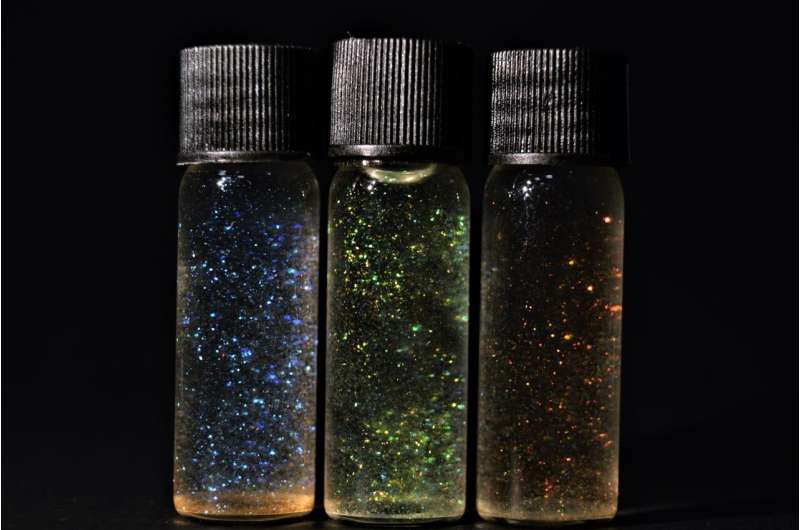Plastic pollution is everywhere. Each year, over 368 million metric tons of plastics are produced with over 13 million metric tons of it ending up in the soil where it can be toxic to wildlife.
Researchers are particularly worried about the environmental impacts of ‘microplastics’ which are small plastic particles less than 5 mm in size.
Microplastics can be produced from products like glitter or when larger objects, including water bottles, break down into smaller and smaller pieces once they’re in the environment.
Due to their small size, animals can eat microplastics, mistaking them for food, which can cause starvation and malnutrition as well as abrasions to the gastrointestinal tract.
A lot of research has shown microplastics are toxic to ocean species but far fewer studies have investigated the impacts of microplastics on land-dwelling species. This is despite annual plastic release onto the land being estimated at over four times the level that enters the oceans.
Glitter is a type of microplastic used in cosmetics, clothing or for decorative purposes.
Most glitter is made of a plastic called polyethylene terephthalate which you probably know as PET. It’s the same plastic that is used for bottled water and soft drink containers.
Conventional glitter also often contains aluminum or other metals, which is where the sparkle comes from.
It is not known how much glitter is getting into the environment, but anyone who has ever worn glitter make-up or used glitter in art and craft knows it seems to end up everywhere.
In 2023, the European Union officially banned the sale of loose plastic glitter and some other products that contain microbeads, in a bid to cut environmentally harmful microplastic pollution in member nations by 30% by 2030.
So far, Australia has not followed suit.
One study in New South Wales, Australia, found that 24% of the microplastics in sewage sludge were glitter.

Once glitter gets into the environment, it is difficult to remove because of its tiny size and because it can become transparent over time on losing the metal components.
While biodegradable glitter is already commercially available, previous research indicates these products could be just as harmful or even more toxic to aquatic organisms than conventional PET glitter because most biodegradable varieties on the market need to be coated in a colored aluminum layer and topped with a thin plastic layer.
Part of a research team, based at the University of Cambridge, has been working on making more sustainable glitter. The study is published in the journal Chemosphere.
They have created a novel nanocrystal made from cellulose that sparkles in light and is biodegradable. Cellulose is made from glucose and is the component that gives tree wood its strength.
They wanted to compare the potential toxicity of conventional glitter with the new cellulose glitter as part of testing how sustainable the new glitter is.
They used a little soil critter called a springtail (Folsomia candida). Springtails are small, white, eyeless invertebrates that are closely related to insects. They are widespread in soils around the world where they feed on leaf litter and compost.
These critters are used as an indicator of soil quality and, because they are sensitive to toxic compounds, are often used to test for potential pollutants.
Using soil from the University of Melbourne’s Dookie campus, the researchers exposed the springtails to different concentrations of conventional and cellulose glitter and studied the impact on their reproduction, survival and growth.
They found that neither glitter impacted springtail survival or size. However, once the concentrations of conventional glitter in the soil reached 1,000 mg of glitter per kg of soil, the reproduction of the springtails was reduced by 61%.
The level of contamination they studied is on par with a soil contaminated with microplastics. Contaminated soils have been found to have up to approximately 100,000 mg per kg of microplastics with most soils below 10,000 mg per kg.
In comparison to conventional glitter, there were no toxic effects on springtail reproduction at any concentration of the cellulose glitter.
So, although it’s promising that neither type of glitter was directly harmful to the springtails, it’s worrying that the conventional glitter affected their ability to reproduce.
Fewer springtails being born can weaken their population, which might lead to bigger problems for soil health like less organic matter breaking down and fewer nutrients being released for plants.
The researchers suggest you think twice before using conventional glitter in make-up, clothing or for arts and crafts, but are hopeful that peope will soon be able to buy a safer, more sustainable and just as sparkly alternative.
More information:
Po-Hao Chen et al, Assessing the ecotoxicological effects of novel cellulose nanocrystalline glitter compared to conventional polyethylene terephthalate glitter: Toxicity to springtails (Folsomia candida), Chemosphere (2024). DOI: 10.1016/j.chemosphere.2024.143315
Provided by
University of Melbourne
Citation:
New plant-based glitter shows no harm to soil organisms (2024, October 11)
retrieved 11 October 2024
from https://phys.org/news/2024-10-based-glitter-soil.html
This document is subject to copyright. Apart from any fair dealing for the purpose of private study or research, no
part may be reproduced without the written permission. The content is provided for information purposes only.

